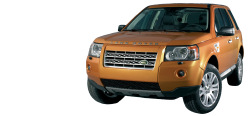AJ918
Member Since: 26 Mar 2018
Location: North West
Posts: 260

 
|
Assuming that you've checked everything is okay the I.e brake pad warning light wiring following the brake pad fitment.
Code U0121 stands for Lost Communication with Anti-lock Brake System Module .
Basically, the ABS system does what the driver used to do in the old days - pump the brakes during a panic stop.
To accomplish this, the ABS system relies on complex hydraulics and electronics.
* ABS control module : The ABS module is the computer in charge of monitoring and controlling the ABS system. The ABS module may also be referred to by other names, such as the Electronic Brake Control Module (EBM).
* Wheel speed sensors : Wheel speed sensors provide input to the ABS module regarding vehicle speed. This is how the module determines wheel lockup is about to occur.
* Hydraulic modulator: solenoid valves are located inside the modulator. The ABS module controls brake fluid pressure to the vehicle wheels by operating these valves. Applying and releasing brake fluid pressure prevents wheel lock up.
* Pump Motor and Accumulator: Some ABS systems use a pump motor and accumulator to provide braking assist. The motor and accumulator are also used to reapply brake pressure during ABS application. The ABS module controls the pump motor and accumulator.
The ABS module communicates with other onboard computers (referred to as modules) over the controller area network (CAN) bus. The bus is composed of two lines: CAN High and CAN Low. Modules communicate over the CAN High bus at a rate of 500k bits/second, whereas communication over the CAN Low bus is limited to 125k bits/second. At the ends of the bus, there are two terminating resistors.
Code U0121 indicates the ABS module is not receiving or transmitting messages on the CAN bus.
Code U0121 is typically caused by one of the following:
* A dead battery
* A faulty ABS module
* A problem with ABS module circuit
* A problem with the CAN bus
Sometimes U0121 can pop up intermittently, or it can result from a dead battery. This is especially true if the code is a history code and not current. Clear the code and see if it returns. If it does, the next step is to perform a visual inspection. A trained eye can check for issues such as broken wires and loose connections. If a problem is found, the issue should be repaired and the code cleared. If nothing is discovered, check for technical service bulletins (TSBs). TSBs are recommended diagnostic and repair procedures put out by the vehicle manufacturer. Finding a related TSB can greatly reduce diagnostic time.
Check the battery
The ABS module requires a proper voltage level to operate. Before proceeding, check the vehicle battery. Charge or replace the battery as needed and clear the code.
Check for other DTCs
Additional diagnostic trouble codes (DTCs) may indicate problems elsewhere that are affecting ABS module operation. For example, multiple communication DTCs may indicate a problem with the CAN network. Any additional DTCs should be addressed prior to diagnosing U0121.
In the case where multiple communication DTCs are stored, diagnosis will shift to the CAN bus. Like any other electrical circuit, the bus can be checked for problems such as opens and shorts. Bus testing usually starts are pins 6 and 14 of the data link connector. These are the CAN High and CAN Low pins. If a problem is detected, further testing can be performed at additional locations throughout the CAN network. Testing is typically done with a digital multimeter (DMM) and/or breakout box.
Check for a faulty control module
If U0121 is the only DTC stored, the ABS module itself should be checked. In most cases, a professional will start by trying to communicate with the module using a diagnostic scan tool. The tool connects directing to the vehicle’s diagnostic port. Once connected, it can communicate with all modules on the network.
An ABS module that does not respond to the scan tool will need to be diagnosed. Before condemning the ABS module, its circuit should be checked with a DMM. Like any other electrical device, the ABS module must have proper power and ground.
If everything up to this point checks out OK, the ABS module is likely the problem. Before replacing the ABS module, its software should be checked. Sometimes, the ABS module can be reprogrammed instead of replaced. If software isn’t the issue, the ABS module is faulty and requires replacement.
|














![]()

